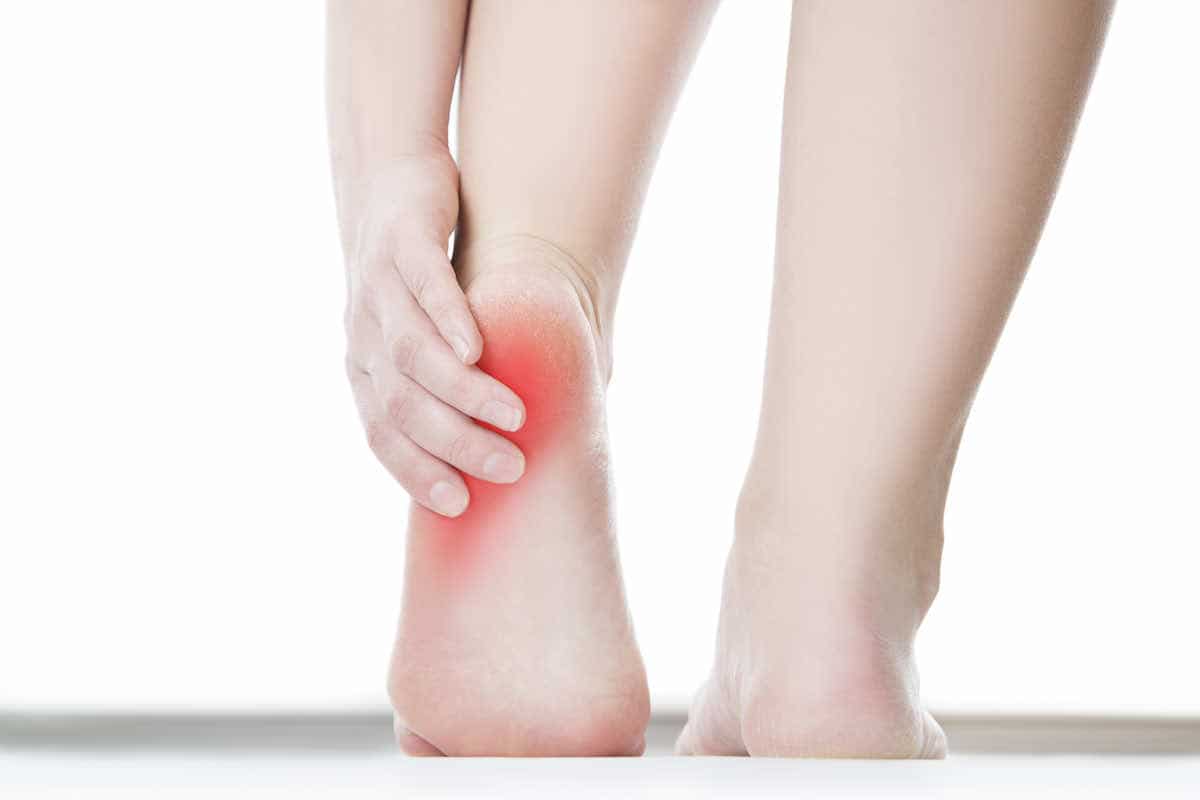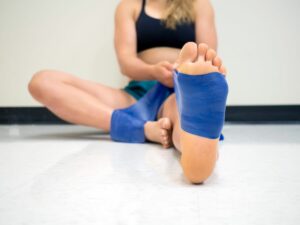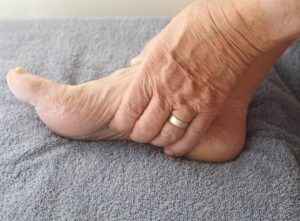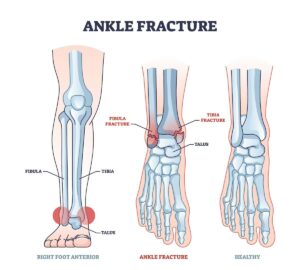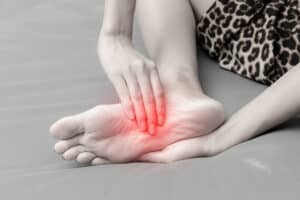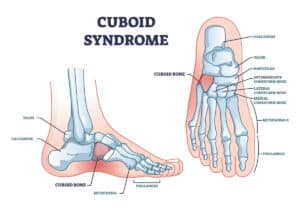Free download: Top 10 Natural & Easy Remedies for Joint Pain from Home. Learn these helpful remedies.
Estimated Reading Time: 5 minutes read
Heel pain is a common problem that can significantly interfere with your everyday activities. Every step can become challenging, making simple tasks like walking or standing for prolonged periods painful. This discomfort often stems from issues related to the plantar fascia – a thick band of tissue that runs across the bottom of your foot, connecting your heel bone to your toes.
The most common causes of heel pain include plantar fasciitis, heel spurs, Achilles tendonitis, and stress fractures. Each condition is unique, with specific triggers and symptoms. Most cases of heel pain have one thing in common: they can be managed and even prevented with the right exercises and care. Understanding what’s causing your heel pain is crucial to finding relief.
Table of Contents
Causes of Heel Pain
Let’s take a look at some common causes of heel pain:
- Plantar Fasciitis: This is one of the most common causes. It involves plantar fascia inflammation, usually due to overuse or poor foot mechanics. The pain is typically concentrated near where the plantar fascia attaches to the heel bone.
- Heel Spurs: These are bony growths on the heel bone’s underside. They often develop due to long-term plantar fasciitis but may not cause pain on their own. However, they can aggravate plantar fasciitis, leading to more persistent heel pain.
- Achilles Tendonitis: This condition involves inflammation of the Achilles tendon, which connects your calf muscles to your heel bone. It usually arises due to overuse or lack of flexibility in the calf muscles, resulting in pain at the back of the heel.
- Bursitis: Inflammation of the bursa, a fluid-filled sac that cushions your joints, can lead to heel pain. This typically causes pain at the back of the heel, where the large Achilles tendon connects with the heel bone.
- Stress Fractures: These are tiny cracks in a bone that often result from repetitive force or overuse. In the foot, these fractures are common in the heel bone, leading to persistent heel pain.
Regardless of the cause, most heel pain conditions have one thing in common: they can be managed and even alleviated with the right set of exercises and appropriate care. Knowing the underlying reason for your heel pain is the first crucial step toward finding relief.
Stretches for Quick Relief
If you’re grappling with heel pain, here are some exercises that might offer quick relief:
1. Calf Stretch
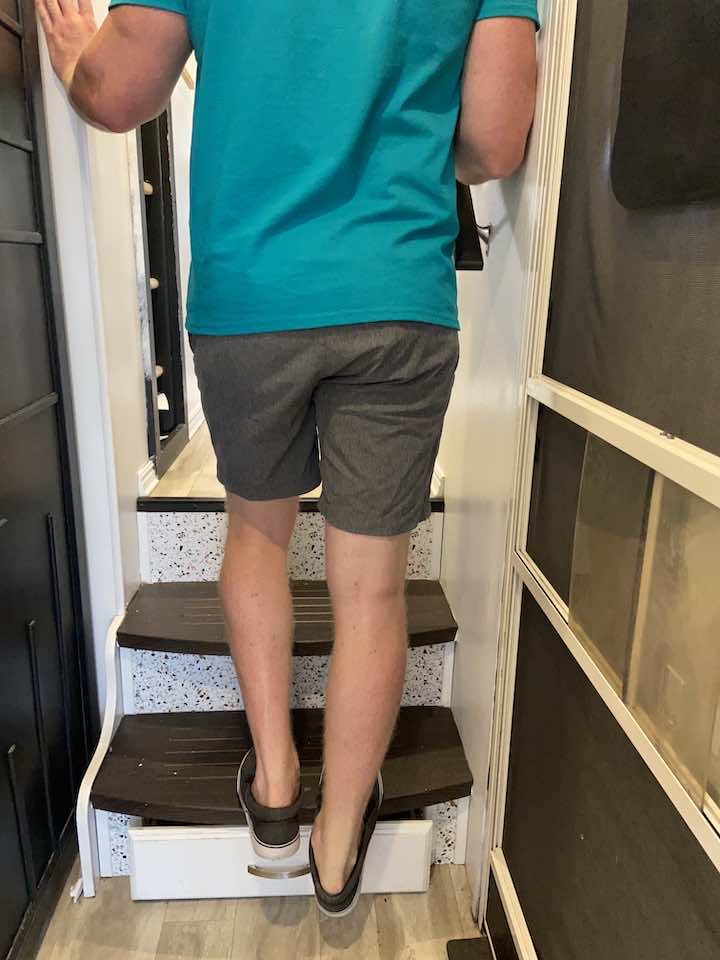
- While holding onto the railing of a staircase, step both feet up.
- Slightly stagger your feet so that the injured heel is hanging off the step.
- Your front leg should bend slightly, while the back (injured) leg’s knee will be straight.
- Hold this stretch for 30 seconds before relaxing.
- Repeat the stretch two more times for a total of three sets.
2. Soleus Calf Stretch
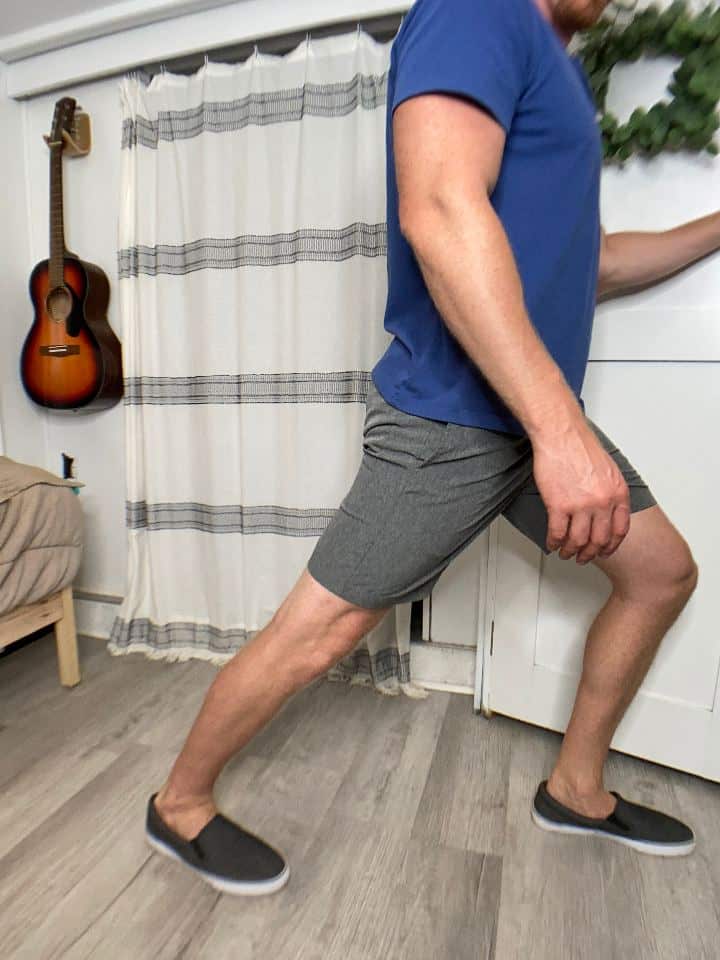
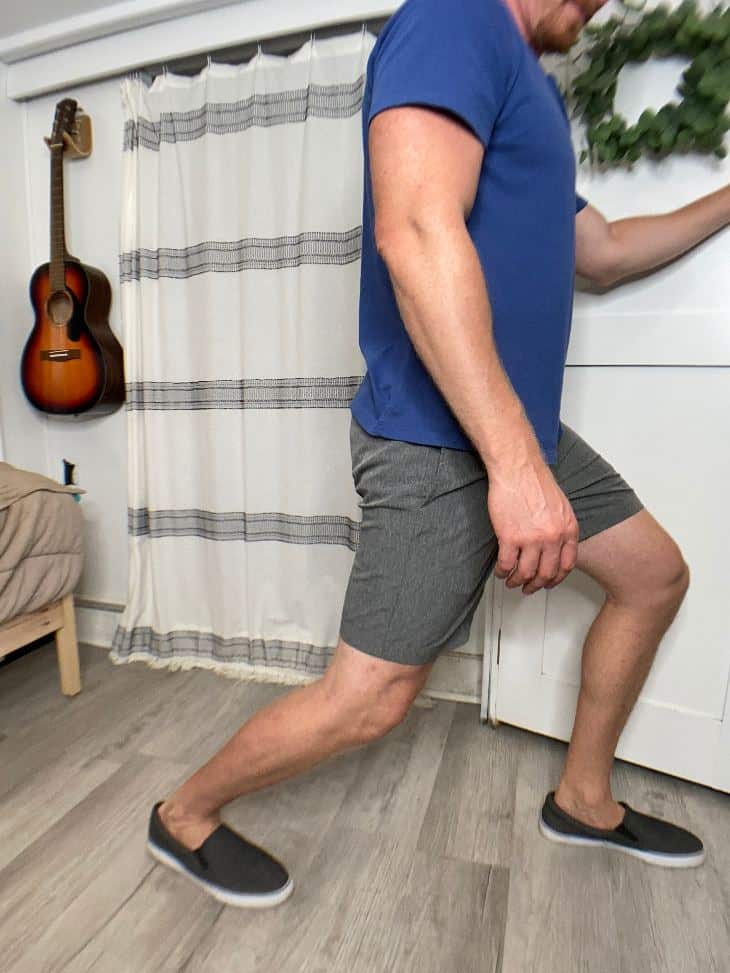
- Perform this stretch exactly like the gastrocnemius calf stretch, except with a small difference.
- Instead of keeping the back leg straight, have the knee slightly bent. You’ll feel more of a direct Achilles tendon stretch with this.
- Hold the position for at least 30 seconds and perform 3 sets.
- Repeat on the other leg.
3. Plantar Fasciitis Golf Ball Rollout
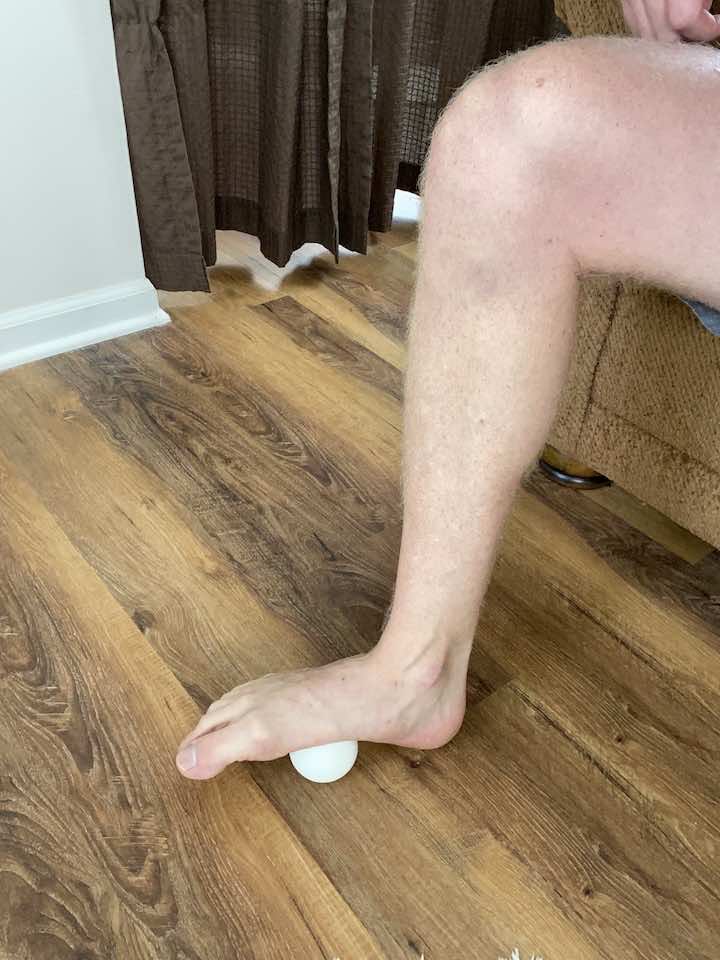
- Sit comfortably in a chair and place a golf ball under the foot experiencing pain.
- Roll the golf ball under your foot, searching for areas of tenderness and providing a massage to the tight plantar fascia tissue.
- Perform 10 rolling repetitions in each set.
- Complete a total of 3 sets of this exercise.
Long-Term Management
Although relieving the immediate pain is essential, you should also consider working on ankle strength to prevent future discomfort:
1. Ankle Eversion with Resistance Band
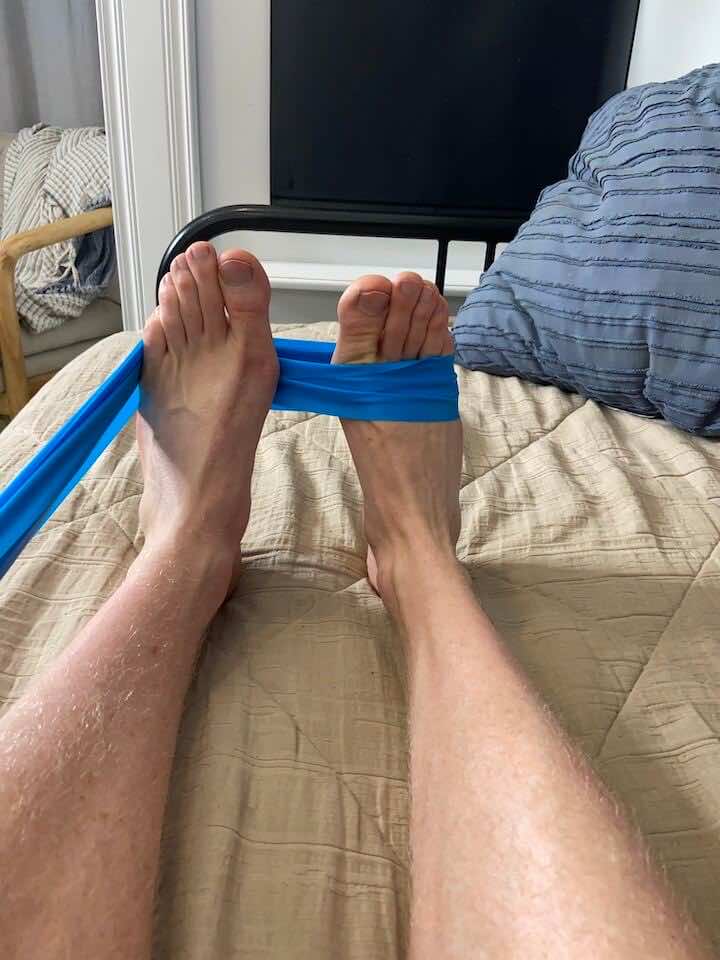
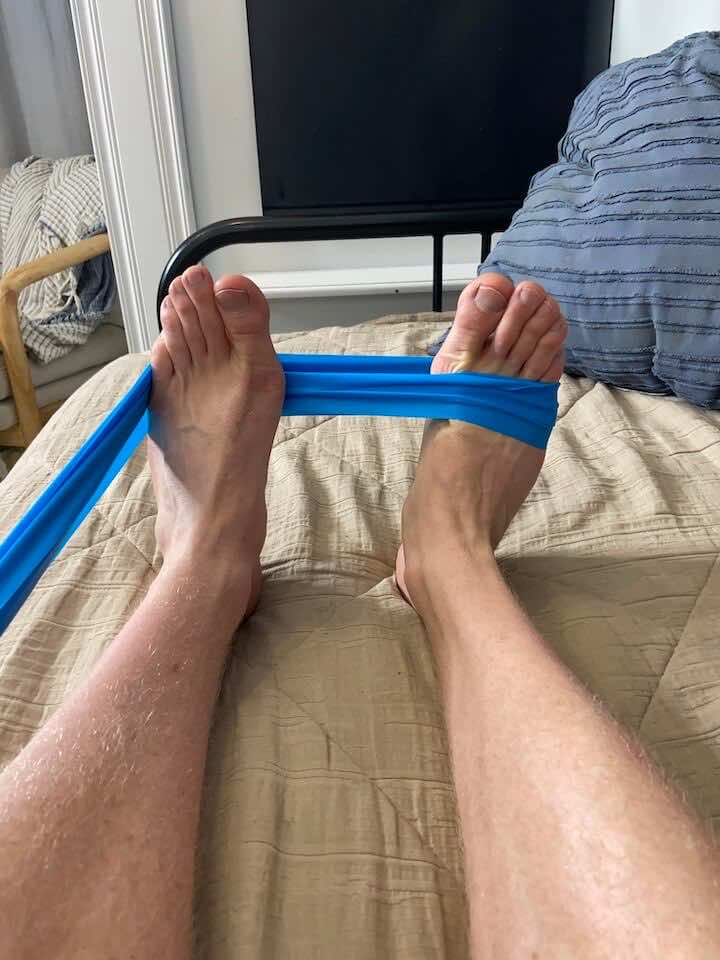
- Lay down on your bed with your ankle off the end.
- Loop the band around your right foot and around your left, as seen in the graphic. We’re going to use your left foot as an anchor for your right foot as your exercise.
- Bring your right foot out like you’re angling your ankle away from your left foot, squeeze in, then relax.
- Do this for 10 repetitions and complete 3 sets in total.
Tip: Work on just moving your ankle and not your entire leg when performing this exercise! See if your knee rolls out at all; try to keep it still.
2. Ankle Inversion with Resistance Band
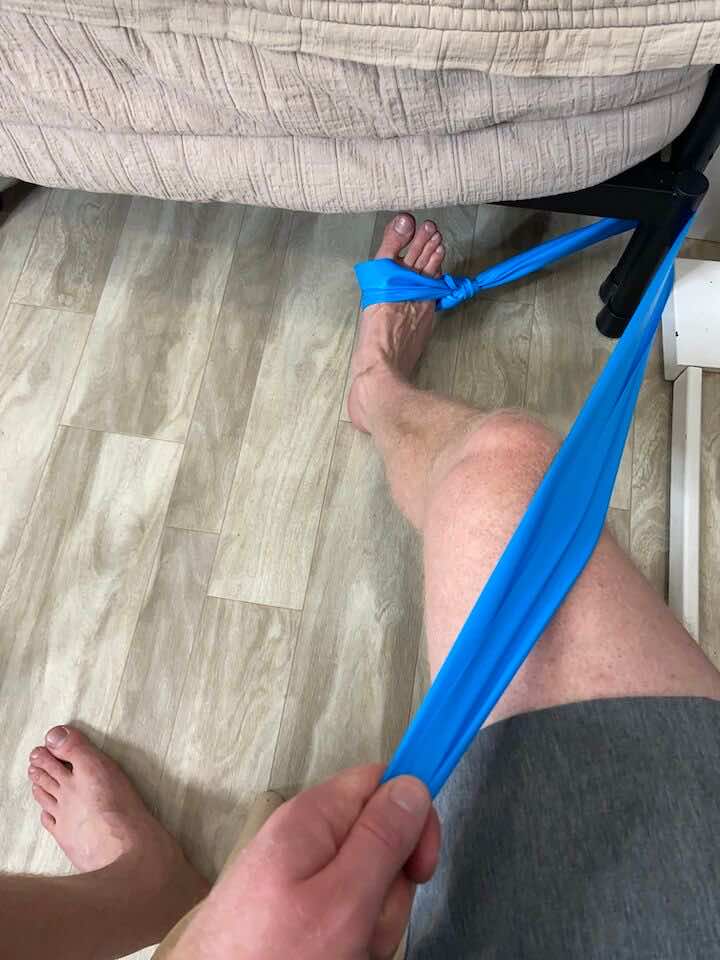
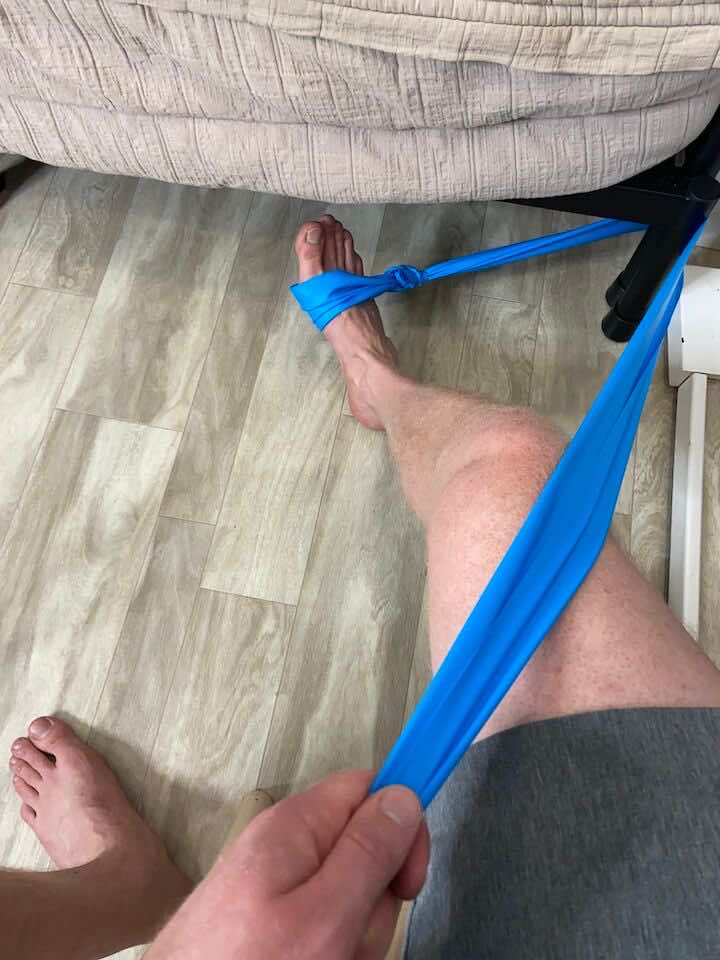
- Sit near a heavy table or sturdy chair that won’t move easily.
- Bring your foot in like you’re angling your ankle toward your other foot, squeeze in, then relax. Loop the resistance band over your foot and around the table or chair leg, as shown in the graphic above.
- Repeat this movement for 10 reps, and do a total of 3 sets.
Tip: Work on just moving your ankle and not your entire leg when performing this exercise! See if your knee rolls out at all, try to keep it still.
3. Ankle Dorsiflexion with Resistance Band
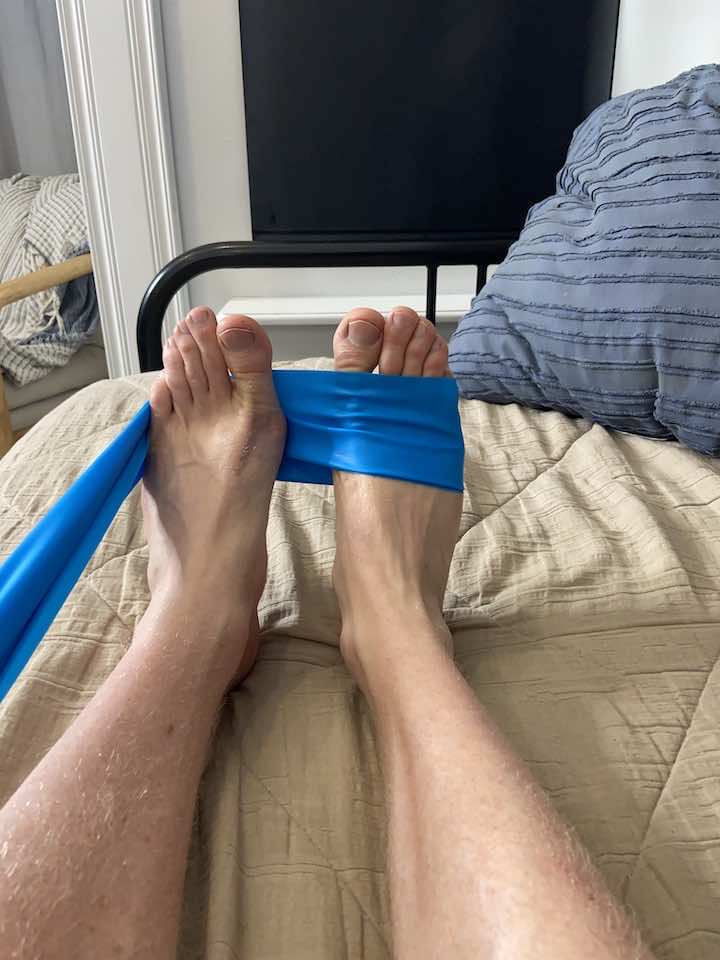
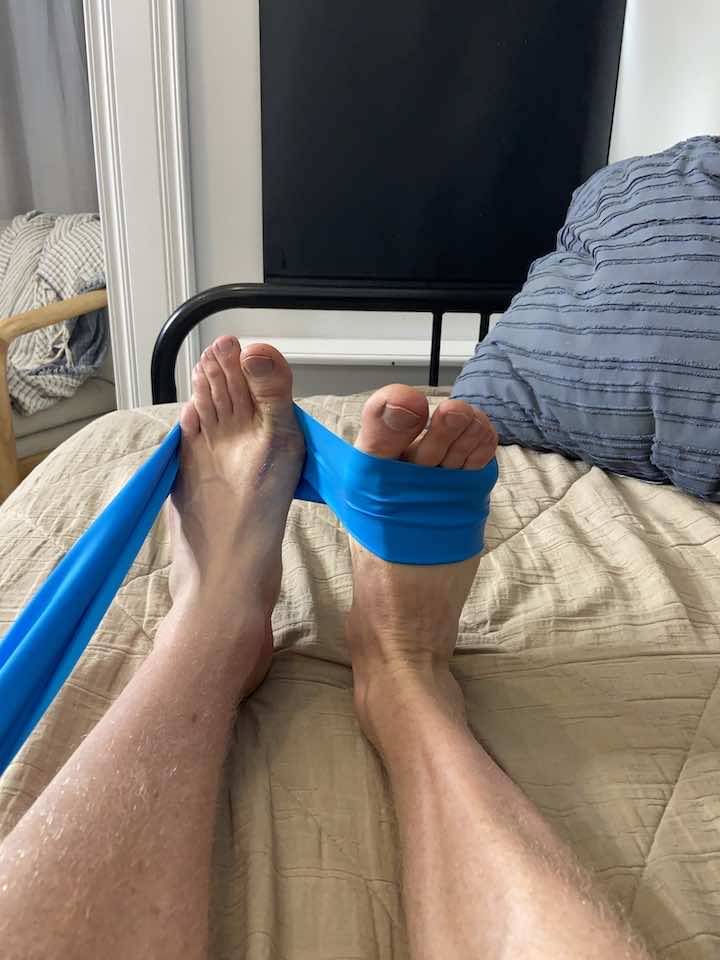
- Lay down on your bed with your ankle off the end.
- Loop the band around your right foot and loop the band around your left foot.
- Point your left foot and hold that position.
- Draw your right foot up like you’re trying to bring your toes to your nose, then relax. Finish the set, then repeat with your left foot.
- Repeat 10 repetitions for 3 sets.
4. Ankle Plantar Flexion with a Resistance Band
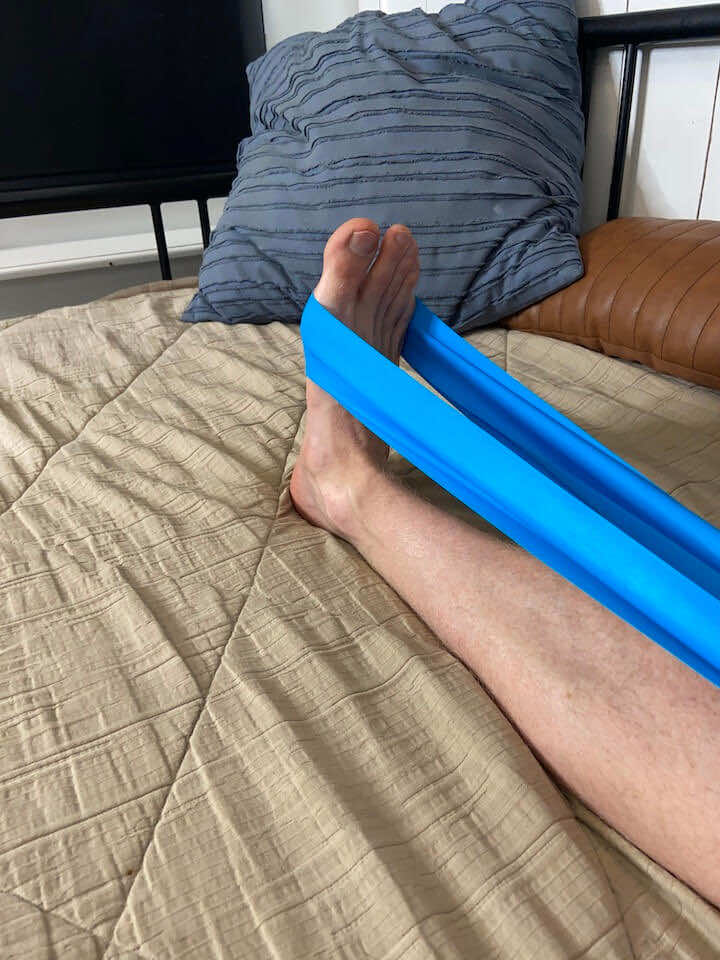
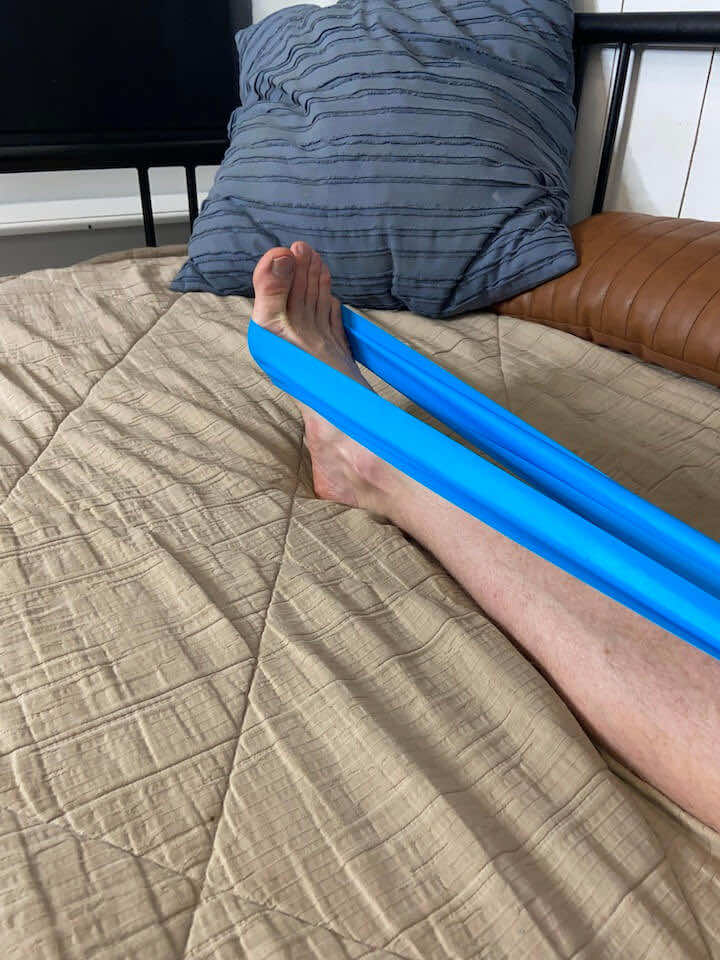
- Lay down on your bed with your ankle off the end.
- Loop the band around your right foot and hold onto the other end of the band with your hands.
- Point your toes and squeeze the back of your calf muscles, then relax. Finish the set, then repeat with your left foot.
- Repeat 10 repetitions for 3 sets.
Conclusion
In conclusion, heel pain, while disruptive, can be managed effectively with the right approach. Regular stretching and strengthening exercises can provide both immediate relief and long-term management of the condition.
However, it’s important to remember that if your pain persists or worsens, it’s always a good idea to consult with a healthcare professional. By taking these proactive steps, you can navigate your way to a pain-free heel and a more comfortable stride.


